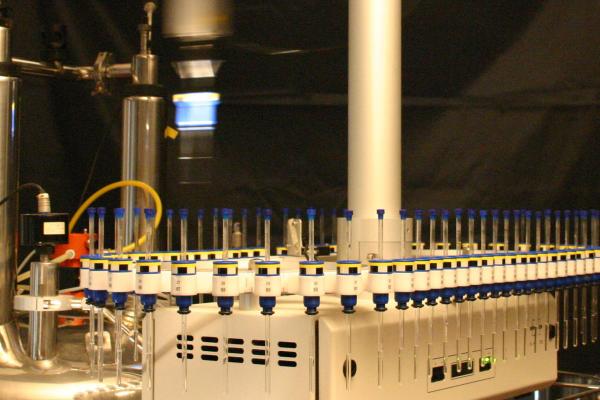Undergraduate Instrumentation Center

Available Instruments
The Undergraduate Instrumentation Center is equipped with a wide variety of instrumentation for chemical analysis including NMR, optical spectroscopy, thermal analysis and GC-MS.
Resources

About Us
The the Undergraduate Instrumentation Center (UIC) in the Department of Chemistry is located in room 414 of Hamilton Hall. The lab houses a wide variety of analytical instrumentation that is primarily used by undergraduate students for both classroom labs and research projects. Graduate students may also utilize these instruments, but undergraduate labs and research projects get first priority.
Facility Staff
Academic Rates: UNL Internal Users
| Short Term (0-4 hours) | Long Term (4-24 hours) | Sampler Changer Rate | |
|---|---|---|---|
| NMR 300 | $9/hour | $6/hour | $8/hour |
| NMR 400/600 | $9/hour | $6/hour | n/a |
| NMR 700-cryoprobe | $20/hour | $12/hour | $12/hour |
| GCMS/UVvis/AA-Fluorimeter/IRmicroscope/HPLC-GC/CD | $9/hour | $9/hour | $9/hour |
| Avatar_IR | $20/hour | $20/hour | n/a |
| STA-Thermal Analysis | $9/hour | $9/hour | n/a |
| ReactIR | $20/day |
Academic Rates: UNL External Users
| Short Term (0-4 hours) | Long Term (4-24 hours) | Sampler Changer Rate | |
|---|---|---|---|
| NMR 300 | $18/hour | $12/hour | $16/hour |
| NMR 400/600 | $18/hour | $12/hour | n/a |
| NMR 700-cryoprobe | $40/hour | $24/hour | $24/hour |
| GCMS/UVvis/AA-Fluorimeter/IRmicroscope/HPLC-GC/CD | $18/hour | $18/hour | $18/hour |
| Avatar_IR | $40/hour | $40/hour | n/a |
| STA-Thermal Analysis | $18/hour | $18/hour | n/a |
| ReactIR | $40/day |
Industrial Rates
| Short Term (0-4 hours) | Long Term (4-24 hours) | Sampler Changer Rate | |
|---|---|---|---|
| NMR 400/600 | $110/hour | $110/hour | n/a |
| NMR 700-cryoprobe | $150/hour | $150/hour | $150/hour |
| GCMS/UVvis/AA-Fluorimeter/IRmicroscope/HPLC-GC/CD | $110/hour | $110/hour | $110/hour |
| Avatar_IR | $110/hour | $110/hour | n/a |
| STA-Thermal Analysis | $110/hour | $110/hour | n/a |
| ReactIR | $200/day |
Notes
- Self operated rate is only available to academic customers after training is completed.
- Training is only offered to academic customers and only when they are expected to have long-term consistent usage.
- Discounts are available for industrial customers purchasing monthly blocks of time on a yearly basis.
- NMR tubes, solvent and any other supplies consumed in acquiring data will be charged back to the customer for all samples.
- For submitted samples any requested sample preparation, data work up and/or interpretation time will be charged at the above rate.
- For submitted samples there is no minimum charge, only the actual time used will be charged in fractional hours.
- State Sales tax will be added to all services and supplies for entities which are not tax exempt.
- View official rates
- Please direct any questions to Martha Morton

